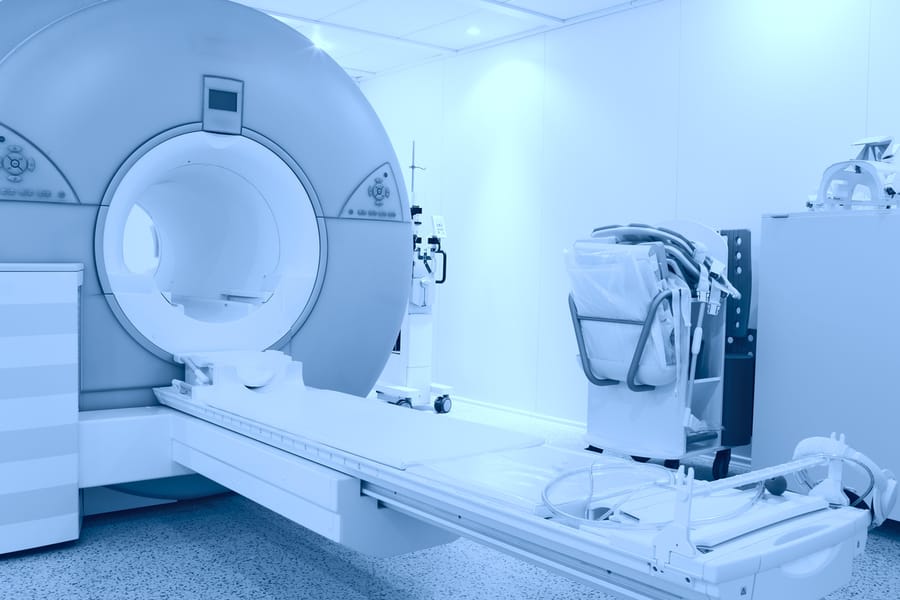
Cyberknife is a non-invasive frameless robotic radiation surgery used to treat benign or malignant tumors or other medical conditions where radiation therapy is advised. This advanced stereotactic body radiation therapy (SBRT) aims at more précised and targeted therapy delivering high doses of radiation without harming the surrounding healthy tissues and organs.
Cyberknife radiosurgery is suited for patients with both operable and inoperable complex tumors. Radiation oncologists and neurosurgeons often prefer Cyberknife radiosurgery in cases where invasive procedures may be ineffective or too risky for the patients.
This highly sophisticated image-guided radiation therapy (IGRT) system received FDA approval in 2001 to treat tumors in different parts of the body. The Incise Multileaf Collimator in Cyberknife enables it to treat a broad range of tumors including liver, lung, prostate, pancreas, kidney, brain, spine and neck and also certain gynecological conditions.
How is Cyberknife surgery different?
In conventional radiation therapies, when the tumor moves along with the patient’s breathing process, there are higher chances of surrounding healthy tissues and critical structures getting unnecessarily exposed to radiation which may give rise to higher level of toxicity in future.
With Cyberknife surgery, it is possible to deliver highly précised radiation on movable tumors in lungs or liver minimizing the exposure of surrounding critical structures to radiation. The targeted tumors are safely and accurately treated causing no undesirable side effects.
Specialty of Cyberknife surgery:
It is the world’s only image-guided robotic radiation delivery system delivering high-precision radiation which is important for the patient. In radiation therapy, the emitted radiation needs to enter and exit the body. Synchronised with real-time imaging, the robotic arm of Cyberknife delivers maximum dose of radiation to the tumor from different angles with sub-millimeter precision enabling proper entry and exit of the radiation.
Prime features:
- A small linear particle accelerator (LINAC) to produce radiation
- The robotic arm enabling targeted radiation delivery from different angles.
Working mechanism:
Prior to the treatment, special gold markers (fiducials) may be introduced into the patient’s body which acts as reference markers guiding Cyberknife in tracking the tumor when the radiation therapy is on. The patient may be fitted with a vest that helps the Cyberknife follow the breathing pattern and track the position of tumor to deliver précised radiation. The patient also undergoes high-precision CT, MRI or PET scans before radiation therapy for accurate determination of the size and location of the tumor.
The imaging data collected from tests are transferred digitally to the Cyberknife system software. Based on the images, doctors create personalized treatment plan for each and every patient selecting the exact dose of radiation matching with the tumor’s size and location. They also mark surrounding critical structures to be avoided thus enabling targeted delivery of the radiation.
The patient lies down comfortably on a cushioned table. The computer controlled robotic arm of Cyberknife system moves around the patient slowly delivering radiation to the tumor from several angles. The system’s software and tracker aided by fiducial markers continuously track the tumor’s position and movement pinpointing the exact location for the radiation to be delivered.
The process is absolutely painless and allows the patient to breathe normally. Each session may last for 30-90 minutes. A patient can complete the radiation therapy in 1-5 days instead of several weeks required in traditional radiation treatments.
Additional benefits of Cyberknife surgery:
- Greater patient comfort since the system is frameless. The patient can breathe normally.
- Requires minimal or no recovery period allowing patients resume their normal activities immediately.
Side effects:
These are often minimal and short lived. Possible side effects are related to the body part being treated.
Effectiveness of Cyberknife surgery:
Lung cancer is the leading cause of cancer related deaths in the US. Safe delivery of lung radiosurgery is considerably challenging due to the continuous respiratory induced movement of the tumor. Cyberknife surgery stands to be a potent solution in such medically inoperable cases.
Scientific evidence has established the direct relation between cancer survival and efficacy of radiation therapy with escalated doses. However, application of escalated doses of radiation has been limited due to high probabilities of destruction of healthy tissues. Cyberknife with its unparalleled accuracy in targeted radiation delivery preserving healthy tissues has been successful in overcoming this obstacle.
Hypofractionated treatments (large dose radiations) using Cyberknife in treating early stage lung cancer has been reported to be safe and effective. It has also been found to be effective in treating medically inoperable recurrent or metastatic lung cancer. A study with early stage lung cancer patients revealed that Cyberknife radiotherapy did not cause any chest wall pain and rib irradiation.
In another study, patients with Stage I non-small lung cancer reported significant improvement in emotional functioning post Cyberknife surgery. Their survival rate was acceptable, local control of tumor was high and toxicity was low. Several case studies have also revealed the effectiveness of Cyberknife in treating brain tumor, prostate cancer and breast cancer.

